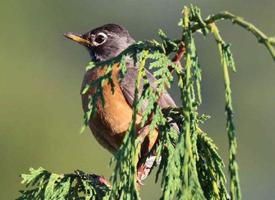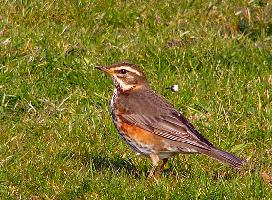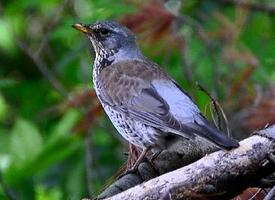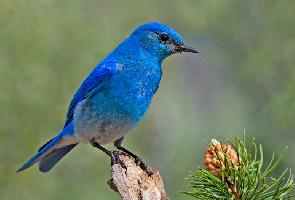
Weights and measures
| Length | from 15 to 20 cm |
|---|
Animal description
The Mountain Bluebird (Sialia currucoides) is a small, vibrantly colored bird that graces the open country of the American West with its presence. A member of the thrush family, it is closely related to other bluebirds, sharing the group's distinctive coloration and behaviors but is distinguished by its particularly vivid blue hue, which covers most of its body, making it a striking sight against the backdrop of its natural habitat.Adult males are especially striking with their brilliant sky-blue plumage that covers their bodies from the tips of their beaks to the ends of their tails. The intensity of this blue is unmatched in the avian world, making the male Mountain Bluebird a breathtaking sight. Females, while more subdued in coloration, possess their own beauty with a mixture of gray, blue, and sometimes a touch of orange on their breasts, providing a lovely contrast to the males and a subtle elegance that complements the landscapes they inhabit.
Mountain Bluebirds are medium-sized birds, with a length ranging from 16 to 20 centimeters (6.3 to 7.9 inches) and a wingspan that can extend up to 34 centimeters (13.4 inches). They have slender bodies, round heads, and straight, thin bills. Their wings are long and pointed, aiding in their agile flight, while their tails are fairly short and even.
These birds are highly migratory, breeding in open, mountainous habitats across western North America, from Alaska and Canada southward through the Rocky Mountains to Mexico. In the winter, they migrate to the southern parts of their range, seeking warmer climates. They prefer open territories such as meadows, prairies, and open, mountainous areas, often at elevations above 7,000 feet, where they nest in cavities, utilizing natural holes in trees, cliffs, and even nesting boxes provided by enthusiasts.
Mountain Bluebirds are insectivores, primarily feeding on a diet of insects and other invertebrates during the warmer months. Their diet includes beetles, grasshoppers, caterpillars, and spiders, which they catch with impressive aerial maneuvers or by foraging on the ground. In the colder months, when insects are less abundant, they supplement their diet with fruits and berries, demonstrating a degree of adaptability in their feeding habits.
Breeding season for Mountain Bluebirds typically begins in early spring. The female is responsible for choosing the nesting site, often a cavity in a tree or a rock crevice, which she then lines with grass, feathers, and other soft materials to prepare for egg-laying. Clutches typically consist of 4 to 6 pale blue or, occasionally, white eggs, which the female incubates for about two weeks. Both parents are involved in feeding the young, which fledge approximately three weeks after hatching.
Mountain Bluebirds are not only admired for their stunning appearance but also play a vital role in their ecosystems as controllers of insect populations. They are a favorite among birdwatchers and nature enthusiasts, who are often captivated by their beauty and the serene habitats they occupy.
Conservation efforts for Mountain Bluebirds include habitat preservation and the provision of nesting boxes to support population growth, especially in areas where natural nesting sites are scarce. These measures have been effective in stabilizing and even increasing local populations, ensuring that the Mountain Bluebird continues to grace the western landscapes with its vibrant blue plumage and melodious song.
Map of occurrence
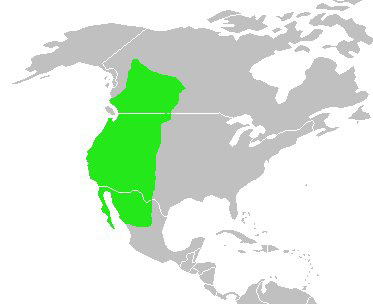
Similar Animals
New photos of animals
Top 10 animals
- Elephant hawk moth (Deilephila elpenor)
- Common house mosquito (Culex pipiens)
- Common cockchafer (Melolontha melolontha)
- Australian box jelly (Chironex fleckeri)
- Fruit fly (Drosophila melanogaster)
- Wasp spider (Argiope bruennichi)
- Colossal squid (Mesonychoteuthis hamiltoni)
- Moustached guenon (Cercopithecus cephus)
- Diana monkey (Cercopithecus diana)
- Sea urchins (Echinoidea)
